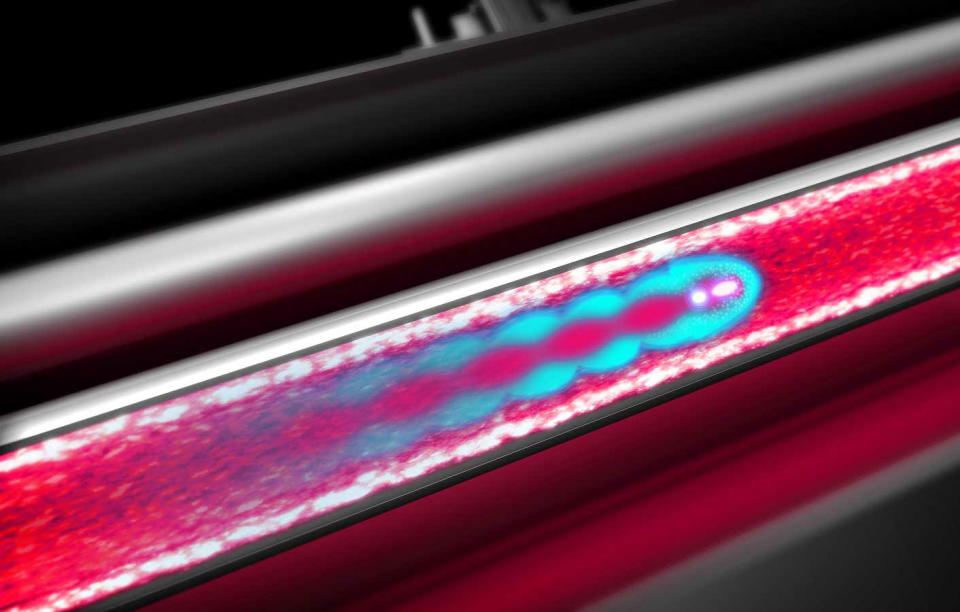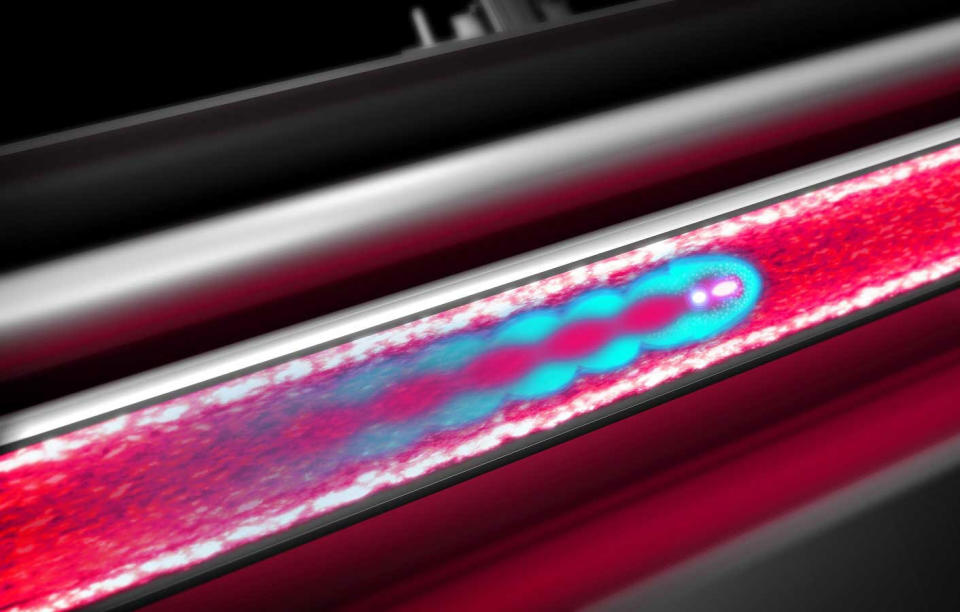Stanford's new lab could make particle accelerators 1,000 times smaller
We could understand the nature of atoms without giant colliders.
Particle accelerators have proven vital to understanding subatomic physics, but current technology tends to make them... rather large. And Stanford is determined to address that. SLAC has started assembling a new location, FACET-II (Facility for Advanced Accelerator Experimental Tests), that could lead to accelerators 100 to 1,000 times smaller than you see today. The facility will produce ultra-high quality electron beams that should help develop new, more size- and cost-effective plasma acceleration techniques.
One of those techniques is the plasma wakefield acceleration method you see above. The approach shoots super-energized electrons through a plasma to create a "wake" that provides energy to trailing particles. Where existing accelerators may need miles to provide enough acceleration power, this would need only "a few meters." FACET-II is also flexible enough to offer the possibility of accelerating positrons (antimatter electrons), and could develop new electron sources like extremely bright X-ray lasers.
The facility won't be ready until the end of 2019, and it won't be cheap at $26 million. If it does produce smaller accelerators, though, it could dramatically reduce the costs of future locations. It'll also serve as a hub for other forms of accelerator research, so you may see some additional breakthroughs regardless of how long it takes SLAC to achieve its main objective. Either way, it may be worth the effort if it improves humanity's understanding of atoms and the universe at large.

